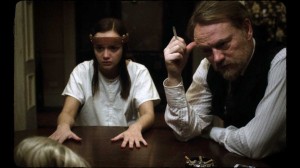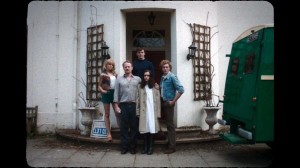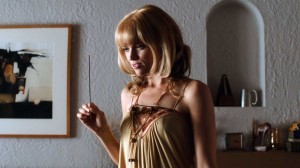
“Our film was ambitious and challenging, with high demands on both technical requirements and aesthetics,” explained producer Jillian Longnecker. “Lit proved to be a great partner for the DI of The Quiet Ones. [DI Colorist] Tyler Hawes is a real talent, plus Lit’s proprietary film emulation technique was key to the film’s visual style. The final result exceeded our expectations.”
“Working on The Quiet Ones was truly satisfying because director John Pogue and cinematographer Matyas Erdely had a very specific and authentic look in mind that used all our latest innovations in the digital intermediate process,” said Hawes. “From the advanced film emulations, to compositing and relighting VFX in the context of the DI, to proofing looks during pre-production, this film really showed what a heightened aesthetic can be achieved when the production is forward-thinking and starts planning for the DI very early in the process, even well before principal photography begins.”
 Because the film takes place in the 1970s and intercuts narrative with some documentary-style footage, the filmmakers wanted it to look as authentic as possible. For story reasons, they decided to combine the looks of 35mm cinema, 16mm documentary, 8mm black and white and VHS tape.
Because the film takes place in the 1970s and intercuts narrative with some documentary-style footage, the filmmakers wanted it to look as authentic as possible. For story reasons, they decided to combine the looks of 35mm cinema, 16mm documentary, 8mm black and white and VHS tape.
Pogue heard of Lit’s proprietary film emulation process, which can adjust digital footage to closely match the look of film, and started talking to Lit about how this could be used on The Quiet Ones.
“There was discussion of shooting various film stocks and cameras,” explained Hawes. “However, besides the high costs and difficult logistics of so many formats, it would have locked-in choices during production, leaving less flexibility in editing. Modernly available stocks also look different from historical ones, so some amount of digital work would be needed regardless. So there was great interest in using our film emulation with digital cameras. However, we felt our role was to help the filmmakers make an objective evaluation of all approaches to prove which would be best for the film. So a test was in order.”
 The production set up a test and shot the same subjects with both 35mm, 16mm and Alexa digital cameras, and then Hawes created film looks to match the digital footage to the film footage using Lit’s proprietary emulation technique. “After a break, the filmmakers came back to view the results side by side on the screen and were surprised that they could not discern which was the real film, and which was digital. The emulation was just that convincing,” said Hawes.
The production set up a test and shot the same subjects with both 35mm, 16mm and Alexa digital cameras, and then Hawes created film looks to match the digital footage to the film footage using Lit’s proprietary emulation technique. “After a break, the filmmakers came back to view the results side by side on the screen and were surprised that they could not discern which was the real film, and which was digital. The emulation was just that convincing,” said Hawes.
Hawes pointed out that his company’s film emulation technology works interactively in real-time or near-real-time in the DI suite, without long renders, so it can be applied in-session during the normal course of color grading. “You can start with the look of a real-world film stock, including many historical ones we’ve profiled,” he explained, “and then mix various aspects you like from different stocks to create your own unique look.”
Lit originally developed the technology in reaction to the trend for productions to shoot digitally. “We love the look of film and sought a way to hold onto most of its special qualities. The so-called ‘film looks’ we’d seen before looked a little kitschy, like canned looks that relied on a broad and nostalgic stereotype of what film looks like rather than actually reproducing the look of film. While there are times you want to be overtly stylized, we had something far more subtle and authentic in mind. Once filmmakers see it used in that way, most of them really love it.”





